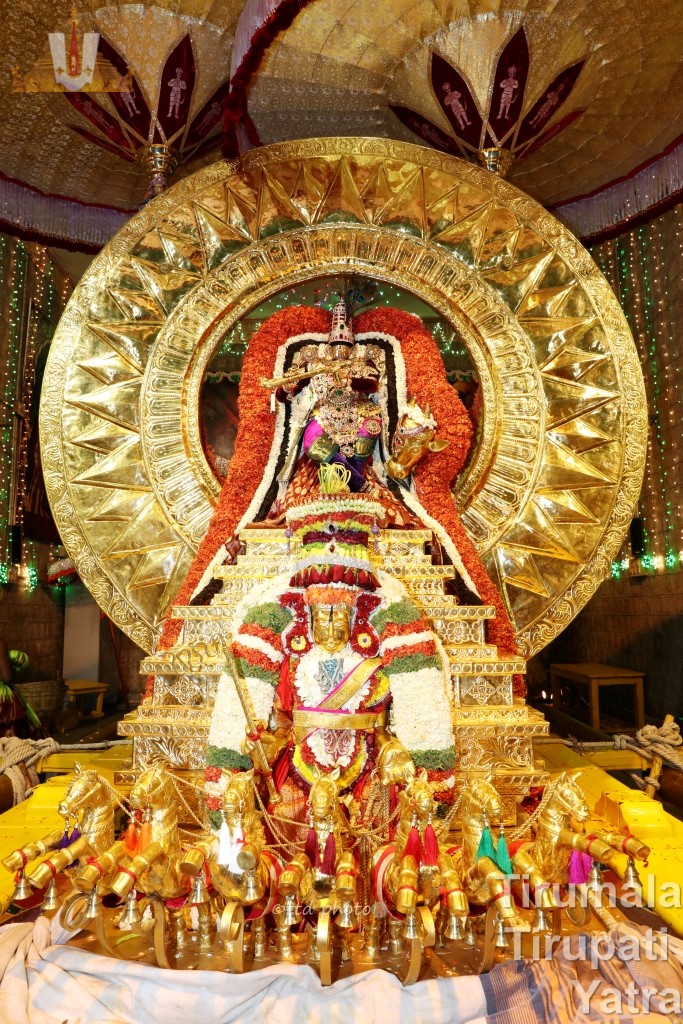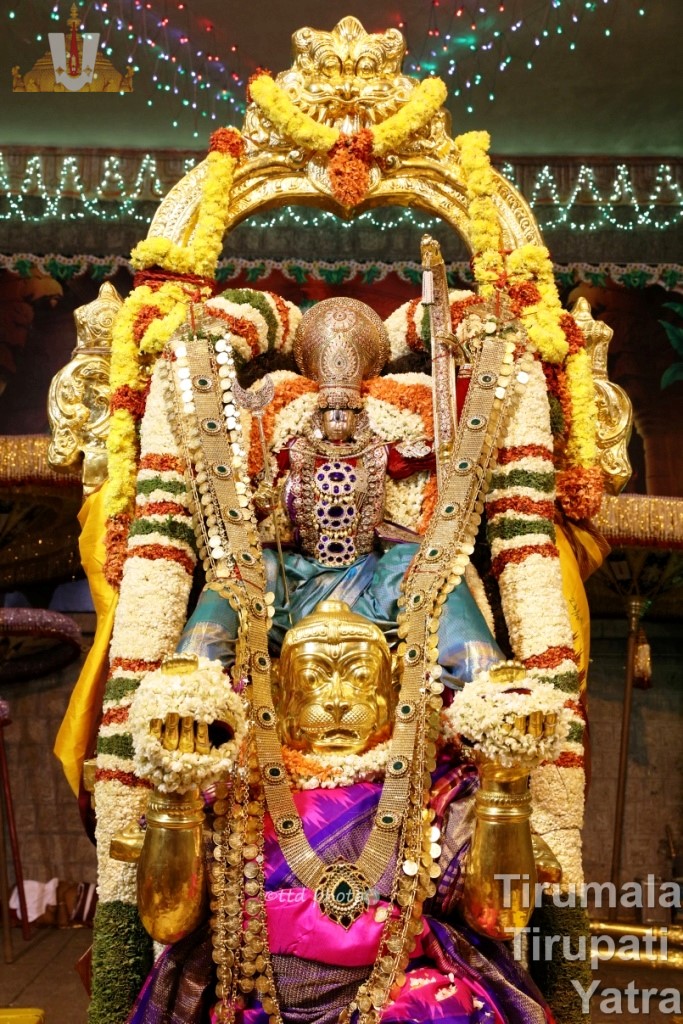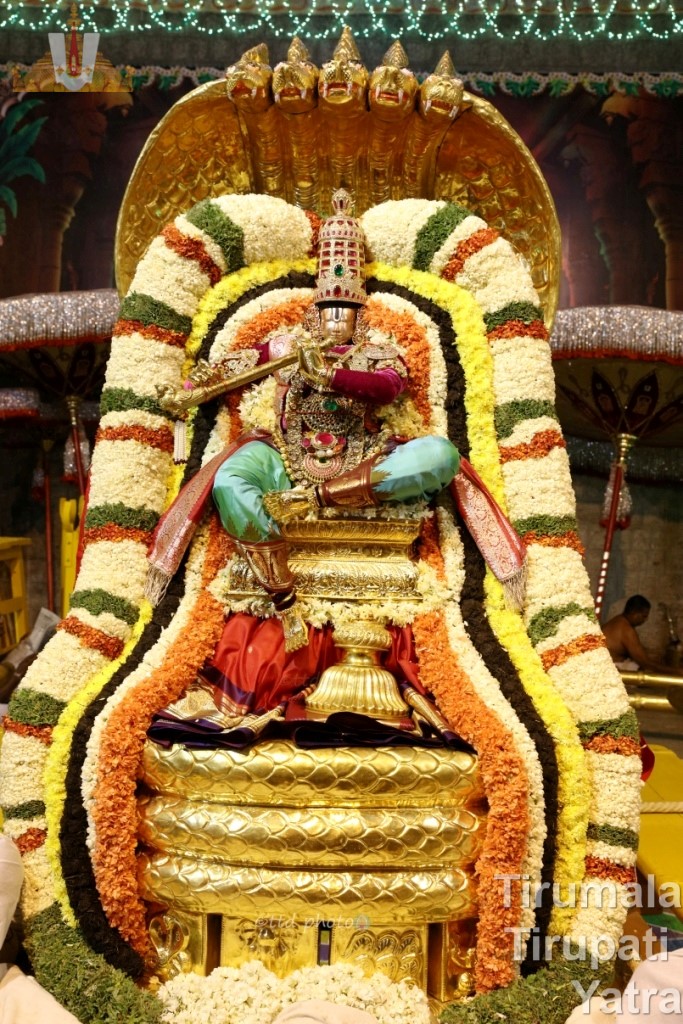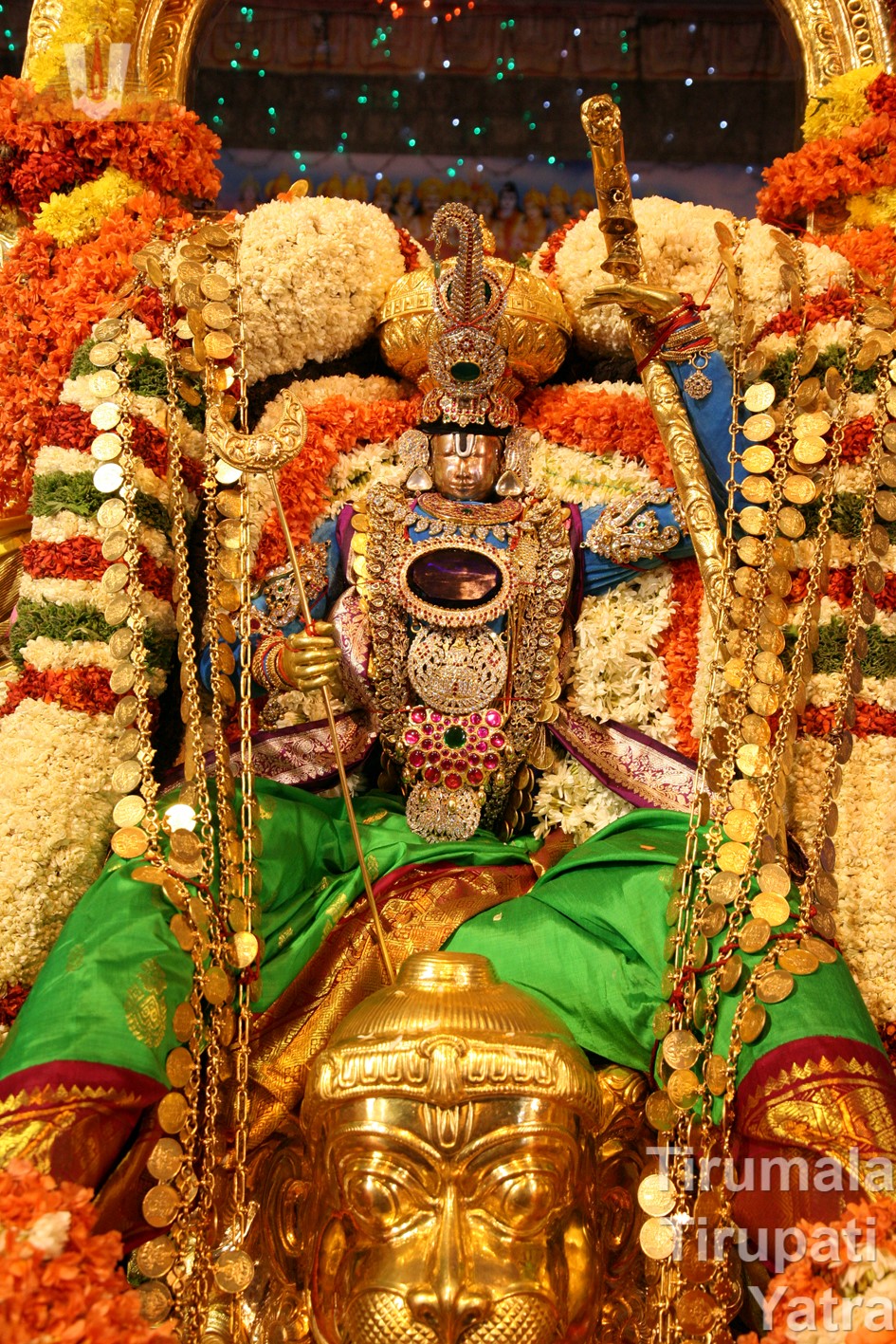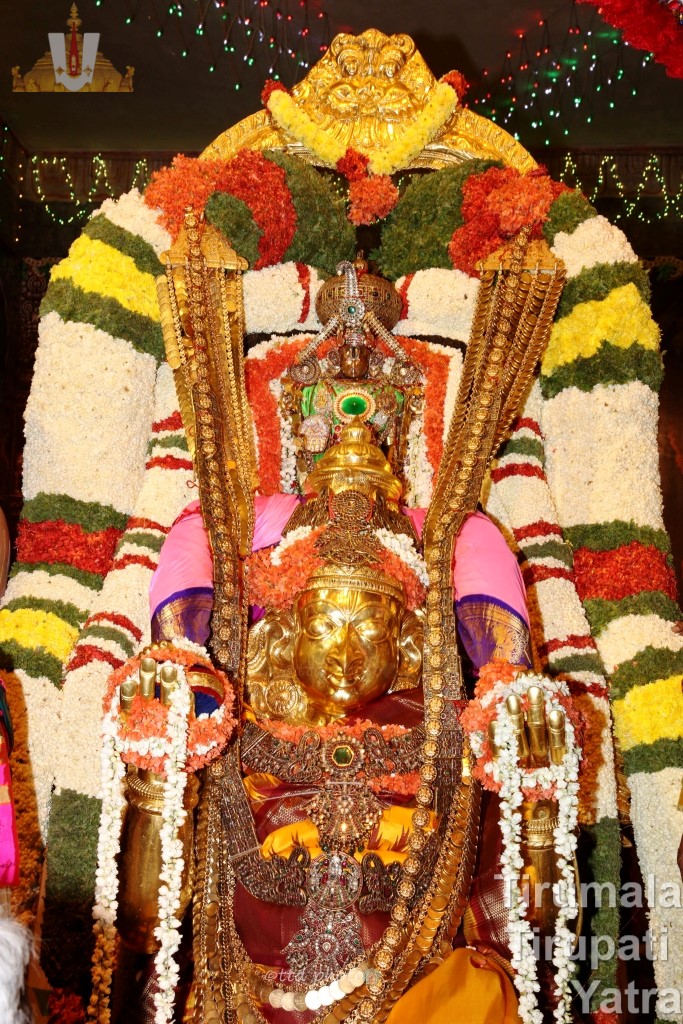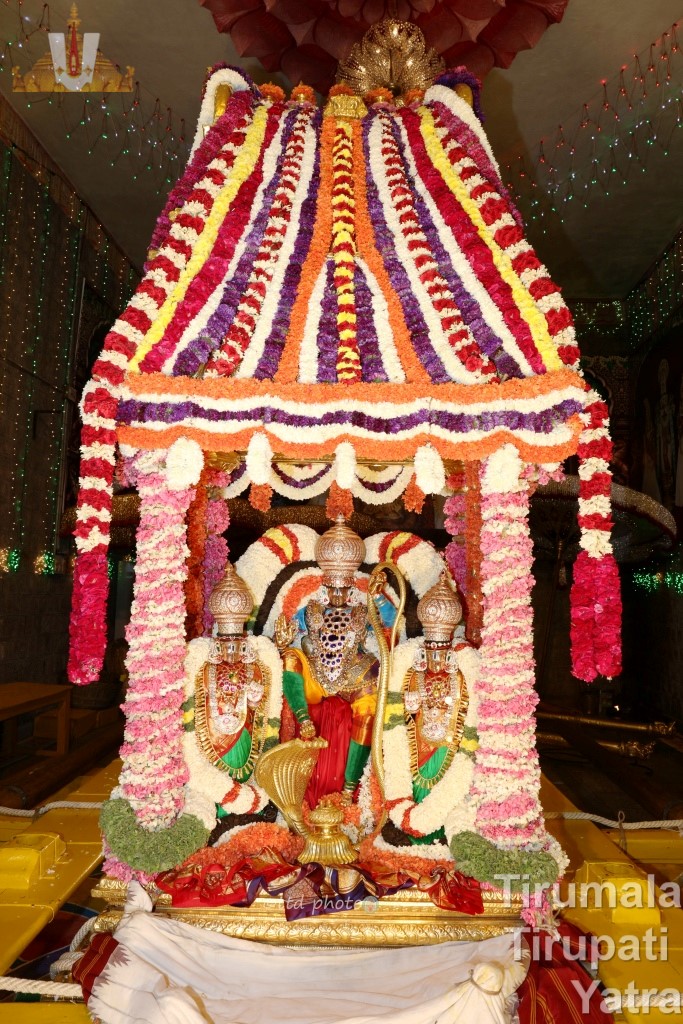Table of Contents
ToggleArtha Brahmotsavas / Rathasapthami
The ‘utsavams’ will be specially and traditionally celebrated on the occasion of ‘Surya Jayanti’ or ‘Rathasapthami in Tirumala, the ‘Kaliyugavaikunta.’ Since the dawn of the Sun till the dawn of the Moon, Lord of Tirumala has been taking His procession radiantly and gloriously in all seven magnificent vahanas offering a brilliant eye-feast to the devotees.
On that day the Lord of the Seven Hills participates in all the processions and in all the ‘vahana sevas’. On each ‘vahanam’ Lord Malayappa’s posture is superbly graceful. Each ‘vahanam’ has its own symbolic speciality, significance and beautification.
The ornaments, jewels and flowers used for the occasion are innumerable and multiple. The floral garlands are richly fragrant and of diverse hues. Regarding the 'vahanas', the experiences of the devotees are different but sweet and spiritual.
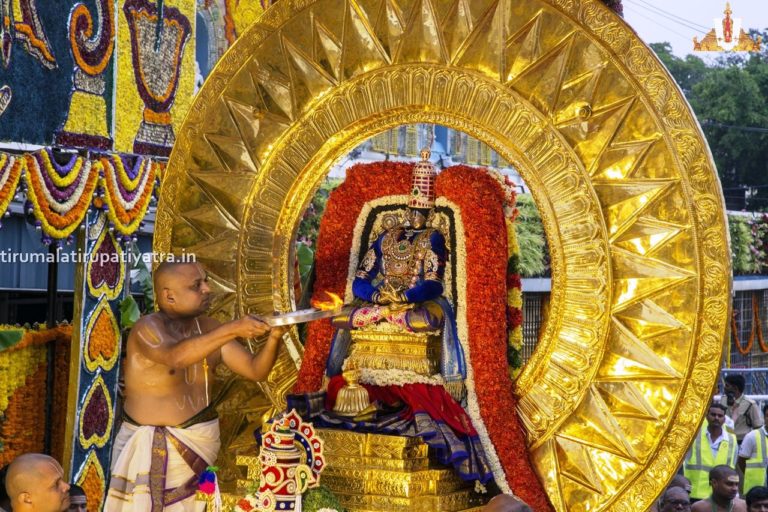
The Seven Vahanas of the Lord of Seven Hills
There will be a Utsava every year on Magha Shuddha Saptami (the 7th day of Magha month according to the Telugu Calendar), i.e. Ratha Sapthami.
Sri Malayappa Swami will stroll into the city streets on as many as seven carriages, such as :
- Surya Prabha Vahana,
- Chinna Shesha Vahana,
- Garuda Vahana,
- Hanumantha Vahana,
- Kalpavriksha Vahana,
- Sarvabhupala Vahana and
- Chandraprabha Vahana.
There will be chakra snana (ablutions to the disc) in the afternoon. Ratha Sapthami festivities are called Artha Brahmotsavas or Brahmotsavas of the past.
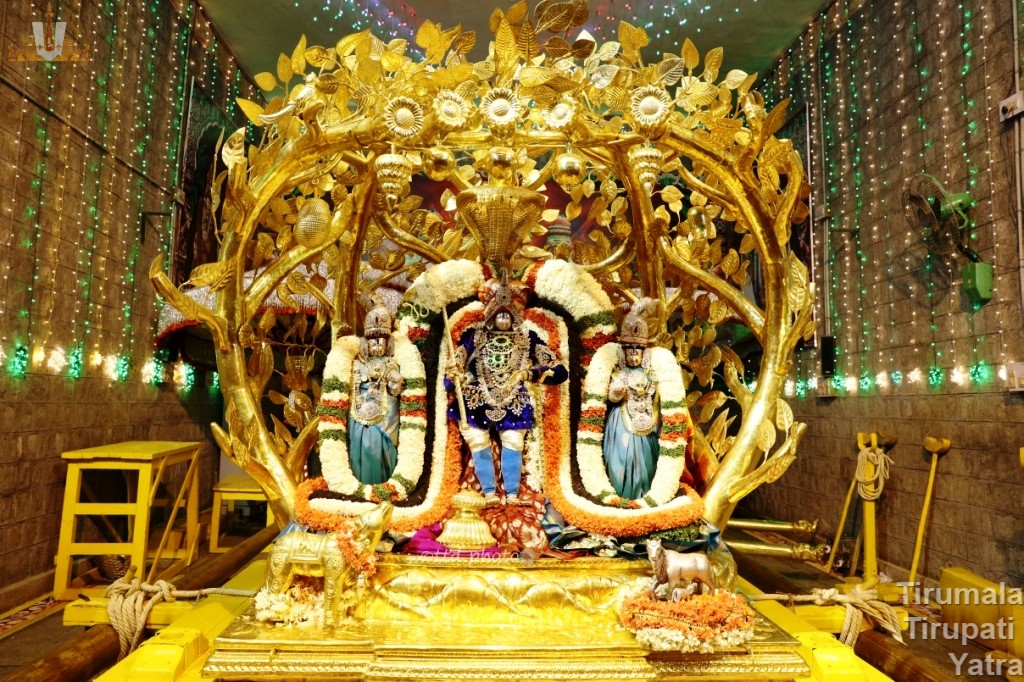
Surya Jayanti = RathaSapthami
The direct and visible deity is Lord Suryanarayana. He transmits direct, bright and healthy rays on all the domains of the world in order to create and strengthen activity to survive the existence of the world.
The day on which Lord Suryanarayana had his origination is traditionally called ‘Surya Jayanthi’ or ‘Rathasapthami and it was marked as a festive day with pomp and splendour.
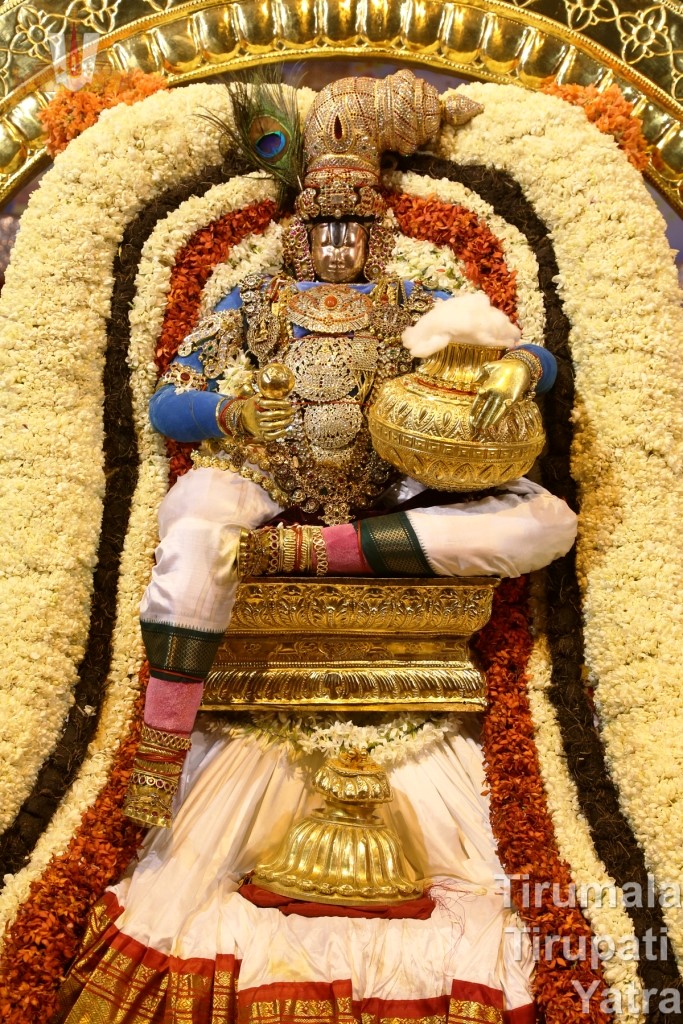
Significance of Rathasapthami
Magha Shukla Sapthami is celebrated as Rathasapthami from ancient days in our land of Vedic culture. Lord Surya worship is as ancient as human life on the earth. Our sacred texts proclaim Surya-Sun God as ‘Karma Sakshee Divakarah’, Surya is an eyewitness to whatever we humans do since his rays enter everywhere. He is also termed ‘Surya Narayana’, since Lord Mahavishnu has bestowed special powers on him, without whose presence we would not have seen the light of a day!
The Vedas praise lord Surya deva as Savitur, in Soura Suktam of Rigveda. ‘Udutyam jatavedasam devam vahanti ketavah’ says the Suktam dedicated to the Sun god. He is also called ‘Sooryaaya Vishva chakshase’ (the eye of the Universe).
Worshipping the Sun as a deity is a common practice since ancient days in our country. Even a farmer in a village home or a worker, unaware of any particular prayer, looks at the rising Sun and does namaskaram with folded hands, as soon as he looks at the Sun rising in the east.
Sapthami, the 7th day of every telugu month, is very significant to Surya deva. He is the lord of planets- grahanam jyotiradityah duritakshaya karakah’, - Sun gives his luminosity to other planets and also wards off their evil effects on humans, according to shastras.
Magha Sukla Sapthami is the day where the Sun god is worshipped as the main deity. Each year, we get, 2 days in a month, and hence 24 Sapthami days, of which Magha Shukla Sapthami is a very auspicious day. On this day, the Sun changes his path towards North.
On this Rathasapthami day, early in the morning people take bath in sacred rivers, wells, ponds and pilgrim centres keeping Arka leaves on both shoulders signifying the Sun as protector. This day is named ‘Rathasapthami’. Women prepare special Payasam of broken wheat / rice, jaggery with ghee and offer it to the Sun God in an earthen pot and offer red flowers to him. This is considered auspicious and pleasing to Sun god.
‘Arogyam bhaskarad icchet’ - one has to pray to the Sun God for good health shastras say. Lord Sri Ramachandra, an incarnation of Lord Vishnu was initiated by Agastya rishi to recite ‘Aditya Hrudayam’ in Ramayana, when he found Ravana, very powerful to defeat and kill.
Aditya Hridayam Stotram
Aditya Hridayam is a very powerful Stotram that is to be recited every day to ward off all evil effects of planets in bad dashas for blessing us with good health and prosperity. ‘Aaditya Hrudayam Punyam sarva shatru vinashakam, jayavaham japennityam.
Aditya Hrudaya Stotram is very powerful which gives us victory, good health and prosperity, longevity and much more, says the Stotram. Lord Surya is remembered as ‘Namaskarapriyah’ one who is easily pleased by offering Surya Namaskaras to Him.
Surya grahana tulya sa Shukla mahasya
Sapthamee |
Arunodaya velayam snanam tatra mahaphalam ||
Says Bhavishya Puranam. This means 'Magha Shukla Sapthami' is equal to the day of Solar eclipse - a Parvakalam, very auspicious occasion to offer our prayers to Sun god. One has to have bath before Sun rise, and offer Arghyam to Lord Suryanarayana.
Let us sincerely pray with utmost devotion to Suryadeva, on this particular day and seek His blessings.
